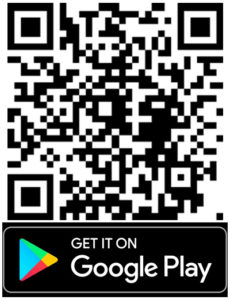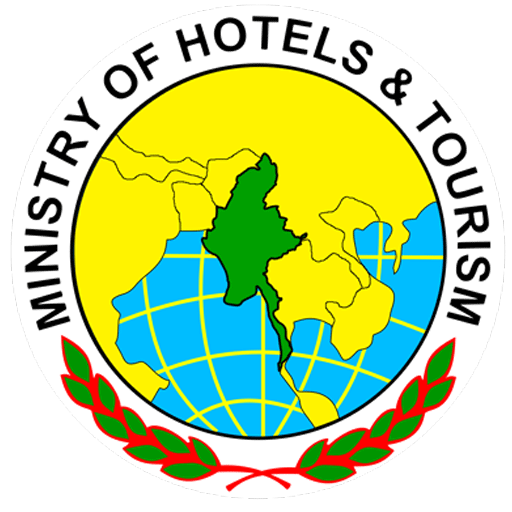Buddhist Way Of Life
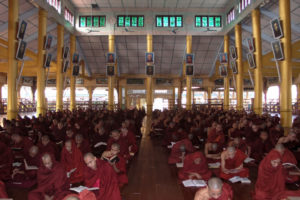 In our country, majority of population are Buddhist. Other are Islam, Hindu, Christian and so on Buddhism has been thriving in Myanmar since the 11th century, or perhaps even earlier Buddhism can be classified into two categories. There are Theravada Buddhism and Mahayana Buddhism. Theravada means the following of the discourses of Ascetic but known to the European as “Small Vehicle” and Mahayane means “Great Vehicle” Myanmar Buddhism. Theravada Buddhists believe that the Thetravada tradition most closely adheres to the original teaching of the Buddha. Myanmar Buddhism is depended on the law of Karma of law of Cause and Effect Karma means all actions. Good karma has good results and karma has bad results. If a man does a good deed of thinks a good thought, the effect upon him is to increase the tendencies tower goodness in him.
In our country, majority of population are Buddhist. Other are Islam, Hindu, Christian and so on Buddhism has been thriving in Myanmar since the 11th century, or perhaps even earlier Buddhism can be classified into two categories. There are Theravada Buddhism and Mahayana Buddhism. Theravada means the following of the discourses of Ascetic but known to the European as “Small Vehicle” and Mahayane means “Great Vehicle” Myanmar Buddhism. Theravada Buddhists believe that the Thetravada tradition most closely adheres to the original teaching of the Buddha. Myanmar Buddhism is depended on the law of Karma of law of Cause and Effect Karma means all actions. Good karma has good results and karma has bad results. If a man does a good deed of thinks a good thought, the effect upon him is to increase the tendencies tower goodness in him.
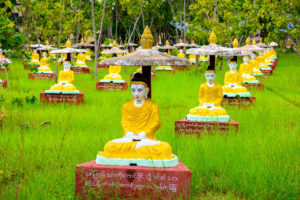 Fundamentally, Myanmar Buddhist take refuge in the Buddha, Dhamma and Sengha. These are called 3 Jewels. They observed the Five Precepts, Eight precepts. The basis precepts that should always be observed are refraining from Killing, Stealing, Sexual misconduct, Lying and Consumption of intoxicants. There are also Eight Precepts which may be observed on is portent says on the Buddhist calendar. In Myanmar Buddhism, Buddhist are practicing give up part of their possession. These are call “Dona” (Charity). And observed the Five precepts and Eight Precepts. These are called “Silla” (morality). Development of the mind is bhavaha(ဘာ၀နာ). A well known of ten quoted Buddhists saving runs, Dana leads to wealth, silo to happiness and Havana to Nibbana. Nibbana is the dying of the karmic force. To an average Buddhist, the act of Dana is the easiest for him to practice because much depends on the attitude of the mind. In every Buddhist house hold has a special corner, usually higher THAN the flooring reserved for the shrine. They placed the one or the more images of the Buddha in the special place. There will be offering of water, fruit, candles and flowers. Buddhist makes an offering flowers, candles and water at leads once a day and recites some devotional verses in Pali and Burmese.
Fundamentally, Myanmar Buddhist take refuge in the Buddha, Dhamma and Sengha. These are called 3 Jewels. They observed the Five Precepts, Eight precepts. The basis precepts that should always be observed are refraining from Killing, Stealing, Sexual misconduct, Lying and Consumption of intoxicants. There are also Eight Precepts which may be observed on is portent says on the Buddhist calendar. In Myanmar Buddhism, Buddhist are practicing give up part of their possession. These are call “Dona” (Charity). And observed the Five precepts and Eight Precepts. These are called “Silla” (morality). Development of the mind is bhavaha(ဘာ၀နာ). A well known of ten quoted Buddhists saving runs, Dana leads to wealth, silo to happiness and Havana to Nibbana. Nibbana is the dying of the karmic force. To an average Buddhist, the act of Dana is the easiest for him to practice because much depends on the attitude of the mind. In every Buddhist house hold has a special corner, usually higher THAN the flooring reserved for the shrine. They placed the one or the more images of the Buddha in the special place. There will be offering of water, fruit, candles and flowers. Buddhist makes an offering flowers, candles and water at leads once a day and recites some devotional verses in Pali and Burmese.
 One of the familiar things we see on the road early in the morning ate yellow robed monks on their alms rounds. They are seen either in groups of five or ten or all alone. They unobtrusively stand outside the Layman’s house. We are offering a morsel of rice a spoonfuls. Earthen are pots, coconut shall, or tin cans with handles are exposed as water booths. Donators of water booths firmly believes that making an offering of even water brings him various kind of blessing (without his prayers) in this very existence and in the turner existence as well.
One of the familiar things we see on the road early in the morning ate yellow robed monks on their alms rounds. They are seen either in groups of five or ten or all alone. They unobtrusively stand outside the Layman’s house. We are offering a morsel of rice a spoonfuls. Earthen are pots, coconut shall, or tin cans with handles are exposed as water booths. Donators of water booths firmly believes that making an offering of even water brings him various kind of blessing (without his prayers) in this very existence and in the turner existence as well.
If we (Buddhist) reached the pagoda, we must be take off our slippers. At this moment we can left behind our slippers at the flower stall. The owner of flower-stall willingly accepted our slippers. They want to get merit from this action. In other words they are sharing merit with us. We can see the Buddhist associations on the Shwedagon platform. They formulated the seven days merit associations. Every day member of these associations are sweeping, cleaning on the platform.
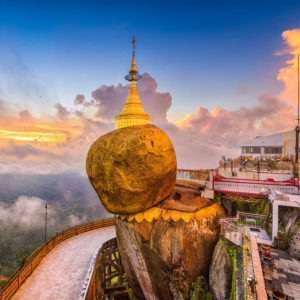 We can see the donation boxes (အလွဴခံပံုး)၊ donation centres (အလွဴခံဌာန) on the Shwedagon Pagoda. Pilgrims donate their money for conservation (တည္ေဆာက္ျခင္း) of Pagoda, for supply electricity and for reservation of Pagoda. They believe to get merits and rich for their future life. After reciting prayers (ဆုေတာင္းေမတၱာပို႕)၊ Pilgrims go to the triagonal Gong (ေၾကးစီ)၊ Post and strike it, others are going to the Bell post and hammed it. We can see the Pilgrims foxing to the planetary post and they are offering water, flowers, paper umbrellas, candle light according to the instruction of Astrologers (ေဟာေျပာသူမ်ား လမ္းညႊန္သည့္အတိုင္း). They believe to get merit and take over their problems (အခက္အခဲမ်ားေက်ာ္လႊားရန္). On Sabbath day, the old age of pilgrims wear white shirt, brown sarong and brown shawls located on their shoulders and willingly go to their respective abbot’s monasteries. And observed the five moral precepts, eight moral position in different size of Buddha images can be found in Myanmar everywhere. If you learn about Buddha images the important things is to understand about the Mudra or the hand gestures of the Buddha. There are more than fifty kinds of Mudra. Among them eight kinds of Mudra are significant in Myanmar images.
We can see the donation boxes (အလွဴခံပံုး)၊ donation centres (အလွဴခံဌာန) on the Shwedagon Pagoda. Pilgrims donate their money for conservation (တည္ေဆာက္ျခင္း) of Pagoda, for supply electricity and for reservation of Pagoda. They believe to get merits and rich for their future life. After reciting prayers (ဆုေတာင္းေမတၱာပို႕)၊ Pilgrims go to the triagonal Gong (ေၾကးစီ)၊ Post and strike it, others are going to the Bell post and hammed it. We can see the Pilgrims foxing to the planetary post and they are offering water, flowers, paper umbrellas, candle light according to the instruction of Astrologers (ေဟာေျပာသူမ်ား လမ္းညႊန္သည့္အတိုင္း). They believe to get merit and take over their problems (အခက္အခဲမ်ားေက်ာ္လႊားရန္). On Sabbath day, the old age of pilgrims wear white shirt, brown sarong and brown shawls located on their shoulders and willingly go to their respective abbot’s monasteries. And observed the five moral precepts, eight moral position in different size of Buddha images can be found in Myanmar everywhere. If you learn about Buddha images the important things is to understand about the Mudra or the hand gestures of the Buddha. There are more than fifty kinds of Mudra. Among them eight kinds of Mudra are significant in Myanmar images.
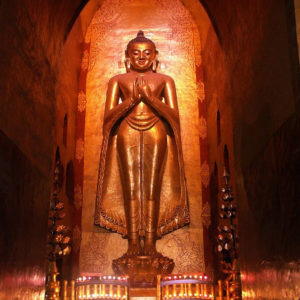 In the seated position mostly we can see Mumiphassa Mudra. In this mudra the right hand rests on the knee with palm inside and the fingers touching the earth, While the left palm turning upwards rests on the lap, This posture represents when Buddha meditated under the Bo-tree the “Mara” an evil one and his troops challenged the Buddha to occupy the seat. Then the lord Buddha called on the goddess of mother earth “Wathon-daray” to testify his mentorious deed in former existence’s. Suddenly the “Wathon-daray” appeared from the earth and squeezed her hair. Allegro amount of water came out from her hair and the “Mara” and his troops run away. So this posture is called Bumiphassa Mudra.
In the seated position mostly we can see Mumiphassa Mudra. In this mudra the right hand rests on the knee with palm inside and the fingers touching the earth, While the left palm turning upwards rests on the lap, This posture represents when Buddha meditated under the Bo-tree the “Mara” an evil one and his troops challenged the Buddha to occupy the seat. Then the lord Buddha called on the goddess of mother earth “Wathon-daray” to testify his mentorious deed in former existence’s. Suddenly the “Wathon-daray” appeared from the earth and squeezed her hair. Allegro amount of water came out from her hair and the “Mara” and his troops run away. So this posture is called Bumiphassa Mudra.
In standing postion we can see “Mahagaruna” Mudra. In this mudra either the left or right hand is raised up to the middle of the chest and the palm turning inwards is folded. The other hand hangs down by the side of the body, pointing fingers downwards, this posture stands for the assurance of tenderness to all creatures as his own offspring and love to all So we can call “Mahagaruna” Mudra in pali or compassion posture. In the reclining position, Buddha is lying on the right side, the hand is on the left lap, the head is directed to the west and rested on the right palm. This posture represents Buddha is preaching the law to celestial beings. In another reclining figure, the Buddha is also lying on the right side. The head directed towards North and rested on the pillow and the right hand is laid in front of the pillow, and feet are lappet on each other. This posture represents Buddha is entering Nibanna or final liberation.
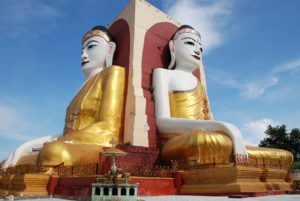 The most significant differences between the early image and later images are the earlobes of the early Buddha images do not touch the shoulders. But in the later images the earlobe touch the shoulders. That is first point in note and second one is the robe of the right shoulder are uncovered. The nipple of the Buddha can be seen in early images where as it cannot be seen in later ones. As a third point , the fingers of early image are not the same in length. They are actually like human beings fingers. In the later images the fingers are even in length. Finally the faces of the ancient images are elongated and sharp. In the later images the faces are oval shaped. The eye of the early Buddha images are down cast eye and strength forwards eye in later image.
The most significant differences between the early image and later images are the earlobes of the early Buddha images do not touch the shoulders. But in the later images the earlobe touch the shoulders. That is first point in note and second one is the robe of the right shoulder are uncovered. The nipple of the Buddha can be seen in early images where as it cannot be seen in later ones. As a third point , the fingers of early image are not the same in length. They are actually like human beings fingers. In the later images the fingers are even in length. Finally the faces of the ancient images are elongated and sharp. In the later images the faces are oval shaped. The eye of the early Buddha images are down cast eye and strength forwards eye in later image.
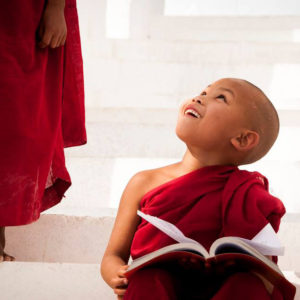 The Buddhist people are worshipping in front of Buddha images and offering the flowers, candles, increase sticks and lam foods (soon) to the Buddha images. So you may think these Buddhism are donates. But we Buddhists are not. We are not worshipping the image or buildings. We just worship or respect the “Nine supreme qualities of Buddha” We carve the image of Buddha as just a monument of attributes of the Buddha images. We realized the teaching of Buddha. That is why we Buddhist pray and respect and after something in front of the Buddha. That is why we Buddhist pray and respect and after something in front of the Buddha images In order to attain merit. We, Myanmar Buddhists pay a great respect to our load Buddha images.
The Buddhist people are worshipping in front of Buddha images and offering the flowers, candles, increase sticks and lam foods (soon) to the Buddha images. So you may think these Buddhism are donates. But we Buddhists are not. We are not worshipping the image or buildings. We just worship or respect the “Nine supreme qualities of Buddha” We carve the image of Buddha as just a monument of attributes of the Buddha images. We realized the teaching of Buddha. That is why we Buddhist pray and respect and after something in front of the Buddha. That is why we Buddhist pray and respect and after something in front of the Buddha images In order to attain merit. We, Myanmar Buddhists pay a great respect to our load Buddha images.

